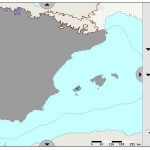There’s been an item in the news the last couple of days to the effect that “[a] report by the European Commission shows that habitat and wildlife protection targets across Europe will be missed…” Digging a bit deeper into that seemingly simple statement led me to a hitherto unknown (to me) world of EU rules and regulations and reporting requirements.
Let’s start at the beginning. There’s a thing called the Habitats Directive (1992). This requests all Member States “to monitor habitat types and species considered to be of Community interest.” It’s unclear to me how they were selected (perhaps someone out there can tell us), but these species are listed in various annexes to the Directive, though that sounds more simple than it is:
Where a species appears in this Annex but does not appear in either Annex IV or Annex V, the species name is followed by the symbol (o); where a species which appears in this Annex also appears in Annex V but does not appear in Annex IV, its name is followed by the symbol (V).
Anyway, Article 17 provides for regular reports on implementation of the Directive, and the report “for the period 2001-2006 for the first time includes assessments on the conservation status of the habitat types and species of Community interest.”
The website which houses the Article 17 reports is, well, complicated, but well worth exploring. The most interesting bit from an agrobiodiversity perspective is the page from which you can get species reports. These include all kinds of information about the status of those “species considered to be of Community interest,” country by country (there’s also an overall summary). Some of these species “of interest” are crop wild relatives such as Allium grosii, an endemic to the Balearic Islands (click the map to enlarge it).
There’s a few more CWRs in those annexes, though not all that many. A Hungarian Pyrus, for example. Any chance to get a few more on there? The bureaucratic infrastructure and mechanism for regular monitoring and early(ish) warning of any threats would seem to be well and truly in place, European Union-style.

You may be interested to know that a few years back I carried out some analysis of the number of CWR included in the annexes of Habitats Directive. The results can be found in Chapter 5 of the text book, Crop Wild Relative Conservation and Use for those that have a copy. I’m not supposed to circulate the pdf but since it may be of interest, I’ve extracted the relevant pages, but note now that I can’t add an attachment here. I think Luigi will make it available. But here is a paragraph from that chapter that’s relevant here:
The reference for the above extract is:
Kell, S.P., Knüpffer, H., Jury, S.L., Ford‐Lloyd, B.V. and Maxted, N. (2008) Crops and wild relatives of the Euro‐Mediterranean region: making and using a conservation catalogue. In: Maxted, N., Ford‐Lloyd, B.V., Kell, S.P., Iriondo, J., Dulloo, E. and Turok, J. (eds.), Crop Wild Relative Conservation and Use. CAB International,
Wallingford, UK. Pp. 69–109.
This analysis resulted from the work carried out within the context of the PGR Forum project and we had people from the European Topic Centre on Biodiversity involved in that project so they are aware of the issue (I presented the results at the First International Conference on CWR Conservation and Use in Sicily in September 2005). Nigel and colleagues have also been involved in lobbying the EC for greater recognition of CWR in the HD and other legislative instruments, but progress is of course slow, as with all policy stuff. At least they now are highlighted in the new European Strategy fro Plant Conservation, which is a step in the right direction.
You may be interested in a new report from BGCI: “Conserving Europe’s threatened plants — Progress towards Target 8 of the Global Strategy for Plant Conservation.” This report includes a list of 1,917 European plant species identified by BGCI as being under threat at the regional level (on the basis of national Red List data from European countries). Of these, 141 species also appear on Annex II of the Habitats Directive and 57 on Annex IV. The list includes many CWR. The report can be downloaded from the BGCI website.
We are working on making the list available on-line as part of the PlantSearch database, which already includes a list of CWR. Once we have this in place, it will be easy for us to extract a list of CWR that are under threat in Europe.